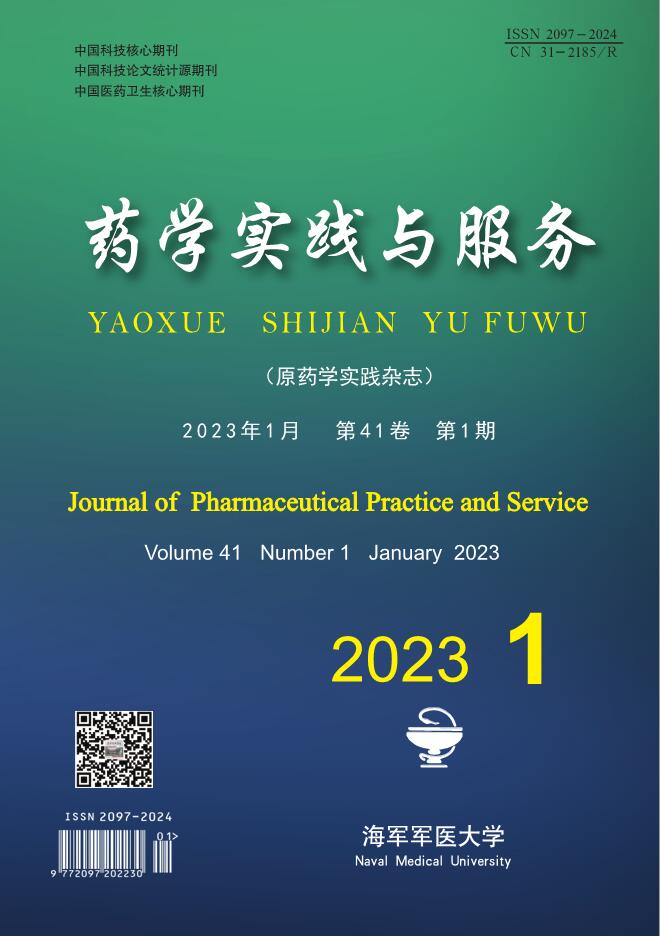-
脓毒症是机体对感染的免疫反应失调而引发危及生命的多器官功能障碍[1],是感染致死的首要原因。据统计,全球每年有4 700万~5 000万脓毒症病例,脓毒症相关死亡人数至少为1 100万[2],约占全年总死亡人数的1/5。脓毒症的病理生理学过程包含宿主全身过度炎症反应和免疫抑制的复杂相互作用,其中,免疫抑制会导致院内感染和体内病毒重激活,甚至出院后长期持久的免疫失能状态,脓毒症患者在免疫麻痹期的累积病死率约为总病死率的90%[3]。脓毒症免疫麻痹主要表现为细胞因子分泌失调、抗原提呈细胞功能减弱、T细胞亚群稳态失衡[4],最终造成机会性感染的易感性增加。然而,临床上对于脓毒症的治疗手段十分有限,阻断TNF-α[5-6]、TLR4[7-8]等控制炎症级联反应的免疫抑制疗法在临床试验中也相继失败;幸运的是,纠正脓毒症免疫麻痹的免疫激活疗法异军突起,为脓毒症治疗带来了曙光,且许多疗法已被临床试验证实有效。本文对基于免疫麻痹纠正的脓毒症免疫疗法研究进展进行综述。
-
细胞因子在脓毒症的发病和转归中发挥着重要作用,细胞因子表达谱的变化是免疫麻痹状态的重要标志。主要表现为IL-10等抑炎因子分泌增加,TNF-α等促炎因子分泌减少,进而负性调节免疫细胞功能,加重免疫抑制状态。细胞因子不仅可以作为生物标志物判断免疫麻痹状态,从而引导临床给药,还可以作为有效的脓毒症免疫治疗手段。
-
粒细胞-巨噬细胞集落刺激因子(GM-CSF)是一种造血生长因子,因能使骨髓祖细胞增殖分化形成粒细胞和巨噬细胞的集落而得名[9]。GM-CSF能激活单核细胞和粒细胞,促进树突细胞的成熟,促进T细胞增殖,并参与iNKT细胞和肺泡巨噬细胞的稳态分化[10]。GM-CSF受体下游包括JAK2/STAT5、ERK、NF-κB和PI3K-Akt等关键通路,能够上调单核/巨噬细胞中的MHC II类分子表达[11]。重组蛋白药物沙格司亭(Sargramostim)在临床上已用于各种原因引起的白细胞或粒细胞减少症。在肥胖伴糖尿病的脓毒症小鼠中,GM-CSF通过增强中性粒细胞和单核细胞的吞噬能力和ROS产生能力从而改善脓毒症的生存[12]。GM-CSF还能通过促进小鼠巨噬细胞选择性转化来减轻脓毒症诱导的急性肾损伤,并提高生存率[13]。Presneill等[14]纳入伴有急性呼吸窘迫综合征的18例重度脓毒症患者的II期临床试验显示,GM-CSF治疗使PaO2/FiO2改善,外周血中性粒细胞计数增加,但未能改善肺外器官功能以及生存率。Drossou-Agakidou等[15]对56例新生儿脓毒症患者的临床试验表明,GM-CSF能使表达HLA-DR的单核细胞数量显著增加。Meisel等[16]纳入38例脓毒症免疫抑制患者的II期临床试验表明,mHLA-DR引导的GM-CSF治疗对恢复单核细胞免疫功能安全有效,且能缩短通气时间并改善临床评分。Hall等[17]对17例小儿脓毒症患者的随机对照研究表明,GM-CSF可以恢复TNF-α产生能力,有效预防院内感染。Leentjens等[18]纳入18例健康志愿者的临床研究表明,GM-CSF对人内毒素血症后免疫麻痹具有逆转趋势。另有预计120例患者参与的IV期临床试验将研究GM-CSF对小儿脓毒症免疫麻痹的逆转作用,目前还在进行中(NCT03769844)。对于全球大流行的COVID-19,既有GM-CSF疗法走向临床试验(NCT04326920),也有针对炎症因子风暴的GM-CSF阻断疗法初见成效[19-20]。可见,GM-CSF是一种有潜力的脓毒症免疫疗法,但仍需准确有效的生物标志物来有效区分患者的免疫状态,以确定其给药时机。
-
干扰素γ(IFN-γ)也称II型干扰素,是一种主要由NK细胞和T细胞等免疫细胞产生的细胞因子,在抗感染和抗肿瘤反应中发挥关键作用。能激活多种免疫细胞,并诱导抗原提呈细胞MHC分子的表达[21]。Döcke等[22]通过临床研究表明,IFN-γ能恢复脓毒症患者的单核细胞HLA-DR表达以及LPS诱导的TNF-α应答。Leentjens等[18]纳入18例健康志愿者的临床研究表明,IFN-γ能降低免疫麻痹状态下的IL-10水平,增加单核细胞HLA-DR表达,并增强LPS诱导的TNF-α应答。Delsing等[23]的研究为IFN-γ辅助免疫治疗可恢复真菌脓毒症患者的免疫功能提供了证据,评估IFN-γ治疗念珠菌血症患者的II期临床试验正在进行中(NCT04979052)。在COVID-19重症患者中,IFN-γ水平表现出严重低下[24]。有病例报告称,IFN-γ能恢复重症COVID-19患者的mHLA-DR,因此呼吁更多mHLA-DR低下的重症患者采用IFN-γ治疗[25]。虽然一般认为IFN-γ有助于增强病原清除能力,但也有研究表明脓毒症早期血浆IFN-γ升高不利于继发念珠菌感染的清除和个体生存[26],因此,仍需要更多的基础研究和临床试验来探索用药指征和给药时机。
-
白介素7(IL-7)最初被认为是一种T细胞和B细胞前体的生长因子,该信号对整个淋巴细胞群体的发育和维持至关重要,包括T细胞、B淋巴细胞和先天淋巴细胞[27]。IL-7R信使RNA的低表达与脓毒性休克患者28 d病死率独立相关[28]。IL-7治疗有望改善脓毒症的淋巴细胞减少症以及T细胞功能障碍。在小鼠脓毒症模型中,IL-7可增强T细胞的生存、转运和功能,并改善小鼠生存情况[29]。IL-7改善小鼠脓毒症后的免疫功能障碍,并提高真菌二次打击模型[30]和铜绿假单胞菌二次打击模型[31]的存活率。IL-7治疗还可以通过γδ T细胞IL-17的产生,在脓毒症小鼠模型中加速中性粒细胞募集和细菌清除[32]。在脓毒症患者中,IL-7能恢复失能T细胞产生IFN-γ的能力,且效果优于PD-L1抗体和OX40L[33]。Venet等[34]纳入70例脓毒症休克患者的体外临床前研究表明,IL-7能恢复离体淋巴细胞增殖,恢复离体CD4+和CD8+效应T细胞增殖,恢复离体CD8+效应T细胞的IFN-γ产生。Venet等[35]还证明IL-7治疗改善脓毒症患者T淋巴细胞的mTOR激活、GLUT1表达和葡萄糖摄取,通过免疫代谢途径使T细胞增殖增强。Francois等[36]纳入27名患者的临床研究表明,IL-7治疗能促进T细胞增殖和激活,逆转CD4+和CD8+效应T细胞的减少,这是脓毒症免疫抑制的关键机制。遗憾的是,最近一项考察重组人IL-7(CYT107)对脓毒症患者淋巴细胞重构的大规模临床试验因药动学问题而终止(NCT03821038)。由于T细胞功能障碍和大量凋亡是严重COVID-19患者的重要特征[37],因此,IL-7可能对COVID-19相关脓毒症的治疗有广泛的前景。目前已经证实,IL-7能够恢复COVID-19患者离体T细胞的IFN-γ产生能力[38],恢复淋巴细胞计数至对照组的2倍以上[39]。
-
白介素15(IL-15)是免疫调节细胞因子家族的成员,是一种具有治疗潜力的多能分子,主要由髓系细胞表达,作用于T细胞、B细胞、NK细胞等多种免疫细胞[40]。在动物模型中,IL-15可阻止免疫细胞凋亡,逆转先天和适应性免疫功能障碍,并提高脓毒症小鼠的生存率[41]。IL-15显著改善脓毒症诱导的T细胞耗竭,增加NK细胞和巨噬细胞数量,增加IFN-γ水平,从而改善脓毒症动物的生存情况[42-43]。由于IL-15能维持炎症细胞因子的平衡以及NKT细胞和CD8+ T细胞的稳态反应,有学者建议将其作为COVID-19免疫调节治疗的可行手段[40]。但IL-15用于脓毒症的治疗还存在争议,比如,IL-15强激动剂未能改善烧伤脓毒症小鼠的细菌清除和生存情况[43],IL-15能通过抑制糜蛋白酶活性抑制肥大细胞依赖的抗菌反应[44],甚至IL-15可能加重脓毒症的严重程度[45]。由此可见,需要更多的基础研究和临床试验来确定IL-15的安全性、有效性,并确定其合理的给药时机。
-
免疫检查点是免疫细胞功能的关键调节因子。近年来,免疫检查点相关疗法在恶性肿瘤的治疗中逐渐趋于成熟。而脓毒症患者中存在着与恶性肿瘤相似的免疫抑制状态,这为脓毒症的治疗带来了新的思路,是目前脓毒症免疫治疗中最有潜力的策略之一。
-
程序性死亡受体1/配体1(PD-1/PD-L1)是T细胞活化的负性共刺激信号,是重要的免疫检查点,近年来在肿瘤免疫治疗中大放异彩。PD-1/PD-L1在脓毒症中表达上调,且T细胞失能和耗竭是脓毒症免疫抑制的重要机制之一,因此,阻断PD-1/PD-L1轴有望纠正脓毒症免疫抑制,改善患者预后。动物实验表明,给予PD-1抗体能逆转免疫功能障碍,提高脓毒症小鼠的生存率[46]。对于原发和继发性的真菌脓毒症,PD-1/PD-L1抗体也显著恢复IFN-γ和MHC II类分子表达,提高生存率[47]。研究表明,脓毒症患者免疫功能缺陷与PD-1/PD-L1表达相关,阻断PD-1/PD-L1可通过抑制T细胞耗竭和逆转单核细胞功能障碍改善脓毒症患者的生存[48-49]。而上调PD-L1则会延迟患者中性粒细胞凋亡,并在脓毒症小鼠实验模型中促进肺损伤[50]。此外,阻断PD-1可以改善急性肝损伤中Kupffer细胞的细菌清除,并发挥对小鼠脓毒症的保护作用[51]。阻断PD-1/PD-L1轴的优势主要在于目前已上市多种成熟的抗体药物,并已经广泛用于肿瘤的治疗,具有相对高的安全性。对于具有明显免疫抑制指征的严重脓毒症患者,很多研究者都建议使用抗PD-1/PD-L1疗法,我们也期待大规模的临床试验以证明其治疗脓毒症的有效性。
-
细胞毒性T淋巴细胞相关蛋白(CTLA-4)也是重要的免疫检查点,能与膜受体CD80/CD86结合,负性调节T细胞活化。在脓毒症患者中,CTLA-4在T细胞表面表达上调[52]。在动物模型中,CTLA-4抗体能逆转淋巴细胞凋亡,提高原发性和继发性脓毒症小鼠的生存率[53]。对于原发和继发性的真菌脓毒症,CTLA-4抗体也显著恢复IFN-γ和MHC II类分子表达,改善小鼠生存率[47]。与抗PD-1/PD-L1疗法类似,抗CTLA-4疗法在肿瘤免疫治疗中有着广泛的研究和应用,为脓毒症相关免疫抑制的治疗奠定了基础。
-
T细胞免疫球蛋白黏蛋白3(TIM-3)是一种免疫抑制性受体分子,主要表达在多种T细胞表面。TIM-3在脓毒症患者T细胞中表达上调,能介导T细胞耗竭,发挥负性免疫调节作用[52]。在脓毒症中,TIM-3基因多态性与脓毒症患者生存率以及G+菌的易感性有显著关联[54]。TIM-3能在CD4+ T细胞中抑制NF-κB通路,从而介导免疫抑制[55]。使用α-乳糖阻断TIM-3能够逆转CD8+ T细胞和NKT细胞凋亡,发挥对脓毒症的保护作用[56-57]。使用抗体阻断TIM-3能恢复脓毒症患者离体的单核细胞和淋巴细胞功能[58]。因此,TIM-3阻断疗法是一种有潜力的脓毒症免疫治疗手段,TIM-3抗体在肿瘤免疫治疗中的研究也为该手段提供了参考。
-
淋巴细胞激活基因3(LAG-3)是一种表达在T细胞、NK细胞、B细胞等免疫细胞表面的免疫抑制性受体,能介导T细胞耗竭,发挥免疫抑制作用。LAG-3在脓毒症患者T细胞表面表达上调[52]。在脓毒症小鼠中,LAG-3敲除或阻断可保护其免受脓毒症相关免疫功能障碍,包括逆转T细胞凋亡和IFN-γ分泌等,从而改善细菌清除和生存率[59]。阻断LAG-3可能成为新的脓毒症免疫治疗手段,然而其对脓毒症转归的作用机制还需要进一步阐明。
-
B/T-淋巴细胞衰减因子(BTLA)是一种重要的共抑制受体,能够负性调节T细胞活化。在脓毒症中,BTLA促进T细胞凋亡,已被证明是脓毒症免疫抑制的生物标志物和中介物[60]。BTLA在脓毒症小鼠CD4+ T细胞和B细胞中表达增加,与这些细胞在脓毒症中的减少有关[61]。BTLA负向调节髓系树突状细胞的成熟及其吞噬和杀菌能力[62]。在小鼠脓毒症模型中,BTLA敲除小鼠表现出更高的存活率和对器官损伤的保护[63]。但也有研究表明,低BTLA+ T细胞比例与脓毒症患者高病死率有关[64]。BTLA可抑制TLR4反应,激活BTLA可能对LPS诱导的内毒素休克有治疗作用[65]。综上所述,在脓毒症中阻断BTLA的安全性和有效性仍需论证,并且若在炎症因子风暴期间给予BTLA抗体很有可能不利于脓毒症的治疗。
-
T细胞免疫球蛋白免疫受体酪氨酸抑制基序结构域(TIGIT)是淋巴细胞表面的一种负性免疫共刺激分子,其配体有CD155、CD112和CD113等。脓毒症和脓毒症休克患者T细胞上TIGIT表达显著上调,且TIGIT+ T细胞比例升高与炎症反应加重和器官损伤有关[66]。阻断TIGIT配体CD155可逆转树突状细胞功能障碍,改善脓毒症小鼠的生存[67]。在伴有恶性肿瘤的小鼠中,给予TIGIT抗体能够逆转脓毒症导致的T细胞凋亡并改善生存率[68]。引人注目的是,使用TIGIT抗体可以恢复脓毒症患者离体T细胞的功能[66],提示阻断TIGHT可能是脓毒症免疫治疗的新方法。
-
肿瘤坏死因子受体超家族成员4(OX40,TNFRSF4)是一种主要表达在T细胞表面的正性免疫共刺激分子,能与其配体OX40L结合,介导T细胞增殖和活化。OX40激动性抗体不仅能逆转脓毒症诱导的T细胞凋亡和失能,提高脓毒症小鼠的存活率,还能改善脓毒症患者外周血淋巴细胞中的T细胞功能[69]。对脓毒症患者的T细胞离体给予OX-40L,能增加其IFN-γ产生能力[33]。激活OX40/OX40L轴可能对逆转脓毒症的免疫抑制状态具有积极意义,伴随着更多基础和临床研究,OX40激动性抗体可能成为脓毒症免疫治疗的新方法。
-
胸腺肽α1(Thymosin α1, Tα1)是一种多肽类激素,主要作用于T细胞免疫,能够增强机体免疫,逆转免疫缺陷。合成多肽药物胸腺法新(Thymalfasin)作为一种免疫调节剂,临床上已应用于病毒性肝炎、脓毒症等多种疾病的免疫增强治疗。动物实验表明,Tα1能促进Treg细胞凋亡从而改善脓毒症小鼠生存率[70],通过Notch通路减轻脓毒症大鼠的肺损伤[71]。Tα1与激素联用能改善脓毒症小鼠免疫功能和生存情况[72-73]。Zhang等[74]纳入120例耐药菌感染的脓毒症患者的临床研究表明,联合Tα1和乌司他丁的免疫调节治疗可使T细胞增多,脓毒症患者的生存率升高。Han等[75]对纳入915名参与者的多项临床试验进行Meta分析,发现联合乌司他丁和Tα1的免疫调节治疗显著改善脓毒症患者的全因死亡率、炎症介质和机械通气持续时间。Chen等[76]纳入42例脓毒症休克患者的临床研究表明,Tα1能显著增加多种免疫细胞数量,患者的平均无热期、ICU住院天数、机械通气时间以及28天病死率均明显降低。Wu等[77]纳入361例重症脓毒症患者的临床研究表明,Tα1能逆转免疫抑制状态,改善mHLA-DR水平和28日生存率。另有一项纳入1106名患者的多中心临床试验研究了Tα1对脓毒症的安全性和有效性(NCT02867267),结果尚未公布。在COVID-19及其相关脓毒症中,Tα1能恢复淋巴细胞减少和逆转T细胞耗竭,从而降低患者病死率[78]。但也有研究认为,Tα1可能对恢复COVID-19患者的CD4+和CD8+ T细胞计数或清除病毒没有益处[79],不能降低COVID-19相关死亡率[80-81],甚至Tα1的使用可能不利于COVID-19患者的临床康复[82]。因此,还需要对Tα1在COVID-19以及脓毒症中的应用进行更谨慎和充分的研究,一项Tα1治疗COVID-19伴淋巴细胞减少症的临床试验正在进行中(NCT04487444)。
-
富含IgA和IgM的免疫球蛋白(IgGAM)是一类多组分的免疫效应物质,主要通过介导调理作用、中和抗原以及调节Fc受体表达等方式发挥在脓毒症中的治疗作用[83]。相关药物五球蛋白(Pentaglobin)已在临床试验中表现出对脓毒症的有益作用[84-85]。在小鼠脓毒症模型中,静注IgGAM能够改善小鼠的行为学缺陷[86]。在重症耐药菌感染患者中使用IgGAM,能改善免疫功能和生存情况[87],提示IgGAM是脓毒症中一种有潜力的免疫辅助疗法。然而,IgGAM的使用还存在争议,存在多种不良反应的风险,而且缺乏明确的生物标志物来指导给药。目前,一项针对脓毒症休克患者的基于血清IgM滴度的IgGAM治疗的临床试验正在进行中(NCT04182737)。IgGAM作为辅助疗法,是一种有潜力的脓毒症免疫治疗手段。
-
免疫麻痹是导致脓毒症中晚期患者死亡的主要原因,纠正免疫麻痹状态是脓毒症治疗的重要方向,需要基础研究和临床研究的共同努力。细胞因子疗法、免疫检查点相关疗法以及其他免疫疗法已经成熟应用于肿瘤的免疫治疗,也有望纠正脓毒症中的免疫麻痹。脓毒症免疫治疗面临的主要问题是判断患者的免疫状态,从而确定最佳干预策略和干预时机。专家共识[88]推荐mHLA-DR作为考察天然免疫抑制的首选指标,同时结合监测中性粒细胞功能、NK细胞计数和功能及补体水平来了解患者天然免疫状态;淋巴细胞计数可作为脓毒症患者适应性免疫功能障碍的快速筛查指标;通过检测T淋巴细胞计数、分化、增殖和分泌功能来监测脓毒症患者T淋巴细胞功能;通过血清Ig定量来监测B淋巴细胞功能。最近开展的一项多国多中心的脓毒症个性化免疫治疗试验(NCT04990232),试验根据脓毒症患者血清铁蛋白升高(表明过度炎症)或单核细胞HLA-DR量降低(表明免疫抑制),分别给予炎症抑制剂IL-1R拮抗剂阿那白滞素或免疫激活剂IFN-γ治疗,这项研究通过检测区分脓毒症患者的免疫学特征,从而确定最佳干预策略和干预时机。总之,随着免疫麻痹生物标志物研究的深入,脓毒症免疫治疗将有更广阔的应用前景。
Research progress of immunotherapies on correction of immunoparalysis in sepsis
doi: 10.12206/j.issn.2097-2024.202203113
- Received Date: 2022-03-28
- Rev Recd Date: 2022-08-24
- Available Online: 2023-07-14
- Publish Date: 2023-01-25
-
Key words:
- immunotherapy /
- sepsis /
- immunoparalysis /
- cytokines /
- immune checkpoint /
- immunoreactive substances
Abstract: Immunoparalysis is the main cause of death in patients with intermediate and terminal sepsis. The correction of immunoparalysis is an important direction of sepsis treatment. In the pathological process of sepsis, a variety of factors contribute to the imbalanced secretion of cytokines, weakened function of antigen-presenting cells, apoptosis and depletion of lymphocytes, and ultimately lead to immunoparalysis, secondary infection, and even patient deaths. Cytokines such as GM-CSF, IFN-γ, IL-7, and IL-15, immune checkpoint-related therapies such as PD-1/PD-L1 antibodies, CTLA-4 antibodies, TIM-3 antibodies, and LAG-3 antibodies, and immunoreactive substances such as thymosin α1 and immunoglobulin might be beneficial to correct the immune paralysis of patients. the progress of immunotherapy to correct immune paralysis in sepsis were reviewed in this article.
| Citation: | XING Xinhao, CHEN Linlin, LING Zhongyi, WANG Yan. Research progress of immunotherapies on correction of immunoparalysis in sepsis[J]. Journal of Pharmaceutical Practice and Service, 2023, 41(1): 1-7, 35. doi: 10.12206/j.issn.2097-2024.202203113 |







 DownLoad:
DownLoad: